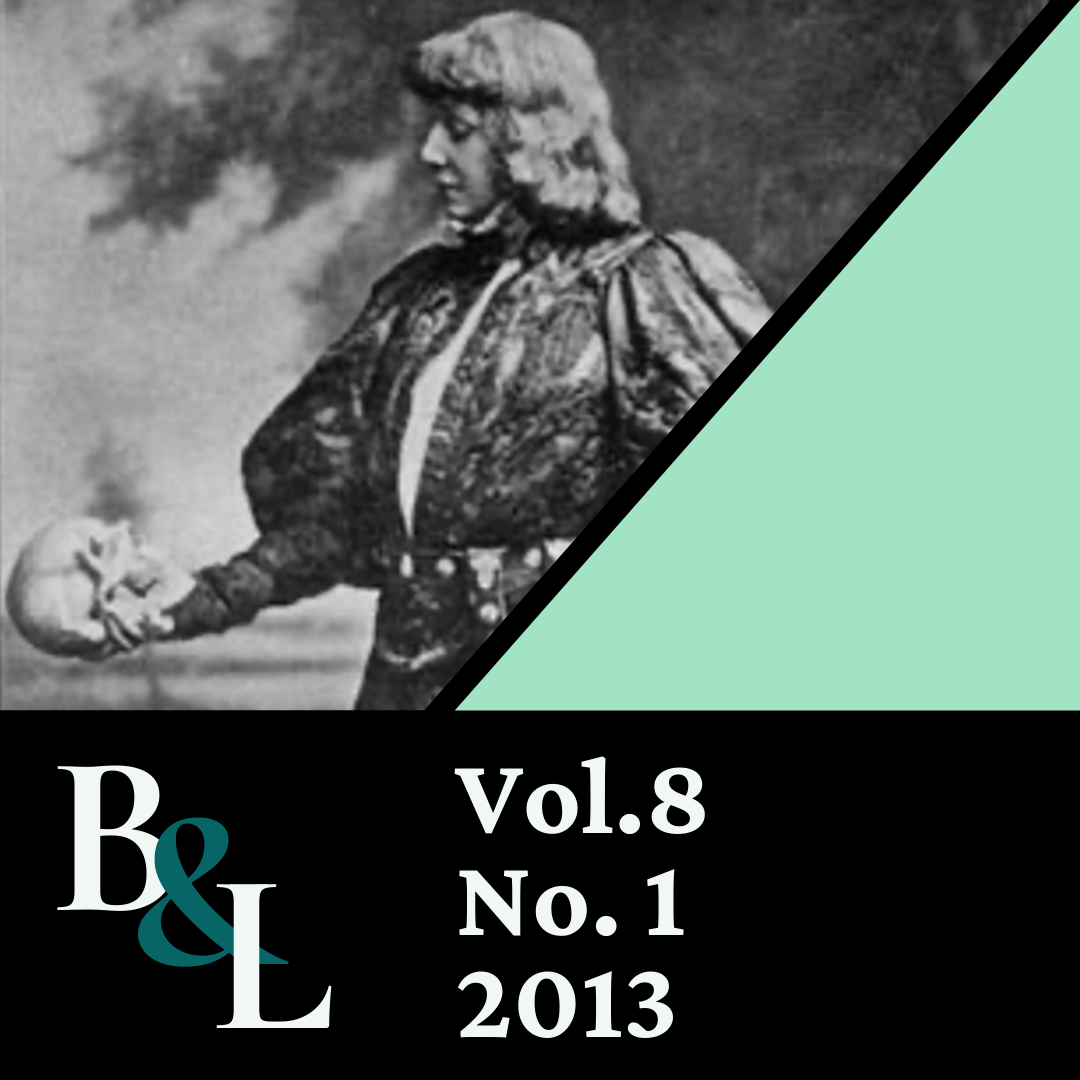"Playing the Men"
Ellen Tree, Fanny Kemble, and Theatrical Constructions of Gender
Keywords:
Hamlet, 19th Century, Performance Studies, Romeo and JulietAbstract
Ellen Tree, the first English performer to regularly play tragic male roles, initiated a nineteenth-century Anglo-American convention in which many women performers played a limited number of tragic male roles, primarily Romeo and Hamlet. Nineteenth-century women's performances of tragic male characters point to multiple tensions and fissures in the understanding and representation of gender in theater. Tree's negotiation of these tensions and her decisions about how, and in what contexts, to play tragic male roles indicate her awareness of the ways in which shifting social perspectives on gender might be accommodated in her stage representations. She followed her enthusiastic and romantic Romeo with Thomas Noon Talfourd's Ion, whose dignified and "classical" character offered a kind of idealized and unsexualized masculinity that was not too deceptively "realistic." Thirty years after she had first performed Romeo with Fanny Kemble as Juliet, Tree attended several of Kemble's public readings of Shakespeare, in which Kemble read all the roles. Tree expressed a combination of admiration and disquiet at the way Kemble "read the men best." Tree's mixed emotions about Kemble's reading register not only her recognition of changing social mores, but also unresolved tensions and ironies in Tree's own theatrical practices. Audience responses to Kemble's readings show astonishment at her intensity and emotionality, particularly her strikingly convincing readings of male characters. These strong audience reactions to Kemble's readings of Shakespeare's plays suggest that the expressions of emotionality possible in public reading could be perceived as more dangerously exciting than stylized and conventional stage performances of the period. Kemble had often criticized acting as overly emotional, and considered stage performance to be less respectable and less intellectual than reading plays aloud without costumes or stage action. Yet Tree, who had performed regularly onstage for over forty years, was shocked by the emotion and lack of restraint in Fanny Kemble's reading. The contradictions and ironies in responses to the stage performances and readings of Tree and Kemble indicate they were both judged for exceeding social expectations of womanly restraint, even as they felt, expressed, and responded to strong emotion in both reading and performance.


